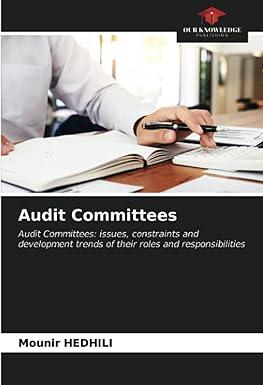Question
Ben Ryatt, professor of languages at a southern university, owns a small office building adjacent to the university campus. He acquired the property 12 years
| Ben Ryatt, professor of languages at a southern university, owns a small office building adjacent to the university campus. He acquired the property 12 years ago at a total cost of $670,000$62,000 for the land and $608,000 for the building. He has just received an offer from a realty company that wants to purchase the property; however, the property has been a good source of income over the years, so Professor Ryatt is unsure whether he should keep it or sell it. His alternatives are: |
| Keep the property. Professor Ryatts accountant has kept careful records of the income realized from the property over the past 10 years. These records indicate the following annual revenues and expenses: |
| Rental receipts | $ | 163,000 | |
| Less building expenses: | |||
| Utilities | $ 29,200 | ||
| Depreciation of building | 18,700 | ||
| Property taxes and insurance | 20,300 | ||
| Repairs and maintenance | 11,200 | ||
| Custodial help and supplies | 44,200 | 123,600 | |
| Net operating income | $ | 39,400 | |
| Professor Ryatt makes a $13,200 mortgage payment each year on the property. The mortgage will be paid off in 10 more years. He has been depreciating the building by the straight-line method, assuming a salvage value of $9,700 for the building, which he still thinks is an appropriate figure. He feels sure that the building can be rented for another 16 years. He also feels sure that 16 years from now the land will be worth 2.10 times what he paid for it. |
| Sell the property. A realty company has offered to purchase the property by paying $200,000 immediately and $21,000 per year for the next 16 years. Control of the property would go to the realty company immediately. To sell the property, Professor Ryatt would need to pay the mortgage off, which could be done by making a lump-sum payment of $82,000. Professor Ryatt requires a 12% rate of return. (Ignore income taxes.) |
| Click here to view Exhibit 8B-1 and Exhibit 8B-2, to determine the appropriate discount factor(s) using tables. |
| Required: |
| a. | Calculate the net present value of cash flows using total cost approach if he keeps the property. (Any cash outflows should be indicated by a minus sign. Round discount factor(s) to 3 decimal places and intermediate calculations to nearest dollar amount.) |
| b. | Calculate the net present value of cash flows using total cost approach if he sells the property. (Any cash outflows should be indicated by a minus sign. Round discount factor(s) to 3 decimal places and intermediate calculations to nearest dollar amount.) |
Step by Step Solution
There are 3 Steps involved in it
Step: 1

Get Instant Access to Expert-Tailored Solutions
See step-by-step solutions with expert insights and AI powered tools for academic success
Step: 2

Step: 3

Ace Your Homework with AI
Get the answers you need in no time with our AI-driven, step-by-step assistance
Get Started


